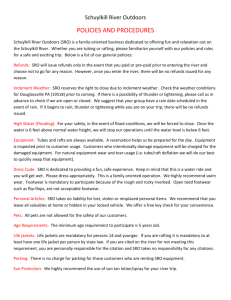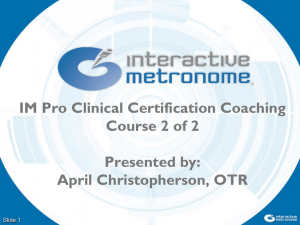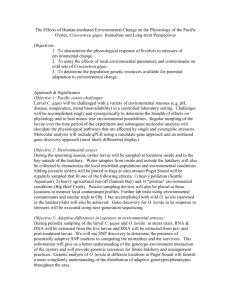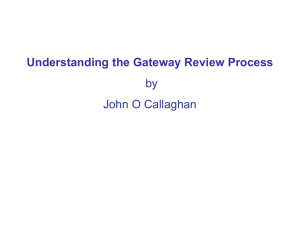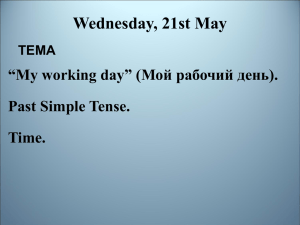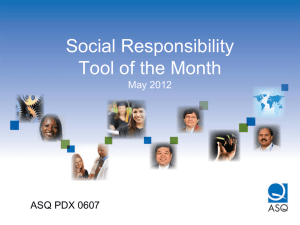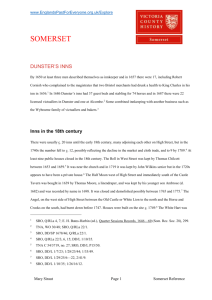Latest results May to July 2014 - NSW South Coast Oyster Industry
advertisement
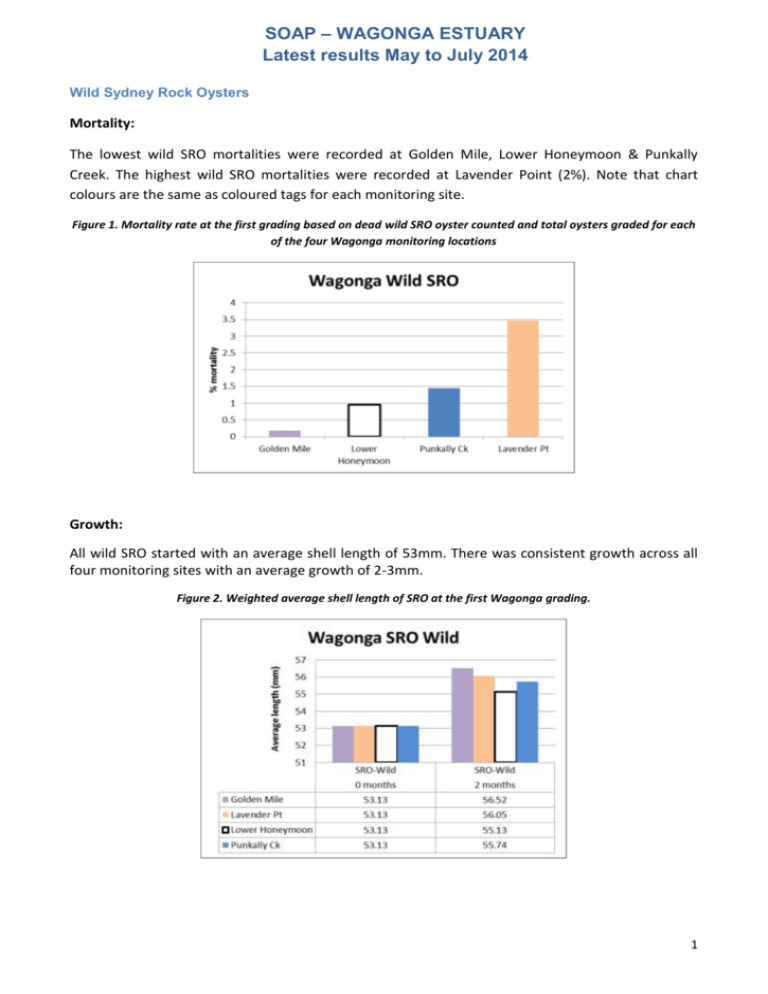
SOAP – WAGONGA ESTUARY Latest results May to July 2014 Wild Sydney Rock Oysters Mortality: The lowest wild SRO mortalities were recorded at Golden Mile, Lower Honeymoon & Punkally Creek. The highest wild SRO mortalities were recorded at Lavender Point (2%). Note that chart colours are the same as coloured tags for each monitoring site. Figure 1. Mortality rate at the first grading based on dead wild SRO oyster counted and total oysters graded for each of the four Wagonga monitoring locations Growth: All wild SRO started with an average shell length of 53mm. There was consistent growth across all four monitoring sites with an average growth of 2-3mm. Figure 2. Weighted average shell length of SRO at the first Wagonga grading. 1 SOAP – WAGONGA ESTUARY Latest results May to July 2014 Hatchery Sydney Rock Oysters Mortality: There was very little difference in mortality rates between the two SRO hatchery sites – Punkally Creek and Lower Honeymoon. Figure 3. Mortality rate at the first grading based on dead hatchery SRO oyster counted and total oysters graded for each of the two Wagonga monitoring locations. Growth: Hatchery SRO were not graded using the SED grader as shell was too thin. We will grade in 2 months and report growth data then. Oyster mortality comparison Figure 4 shows the comparison mortality % across both oyster types and monitoring sites. There was more mortalities in wild SRO than in hatchery SRO. Figure 4. Mortality % comparison between all oyster types and monitoring sites 2 SOAP – WAGONGA ESTUARY Latest results May to July 2014 Other observations Wagonga is the only estuary where a range of different cultivation methods are being used. Punkally Creek site uses 16 SEPA baskets, Lower Honeymoon is using 4 trays, Golden Mile is using 8 floating bags and Lavender Point has used 8 SEPA baskets. Figure 5 shows these different cultivation types and oyster mortalities. Figure 6 shows these different cultivation types and average length after 2 months of growth. Figure 5. Mortality % comparison between all oyster types, sites and cultivation type Figure 6. Average length comparison between all oyster types, sites and cultivation type 3 SOAP – WAGONGA ESTUARY Latest results May to July 2014 Temperature loggers were deployed at four locations in the Wagonga Estuary – Punkally Creek, Lower Lavender Point, Golden Mile and Lower Honeymoon. The hourly temperature results recorded by the loggers can be seen in Figure 7 and show consistent close readings across all sites. Lower Lavender had consistently the warmest water of all sites over the May, June and early July period. Figure 7. Hourly temperature readings at five locations in the Wagonga Estuary between May 10 and July 7 2014. 4
